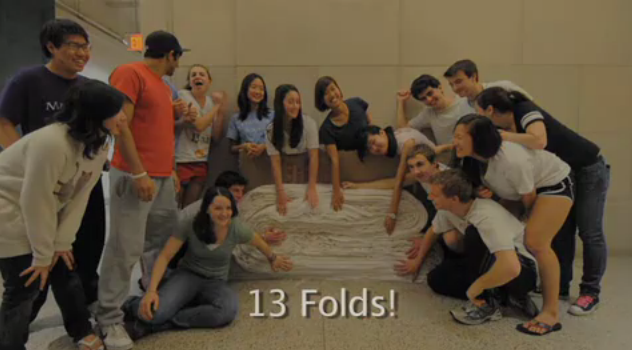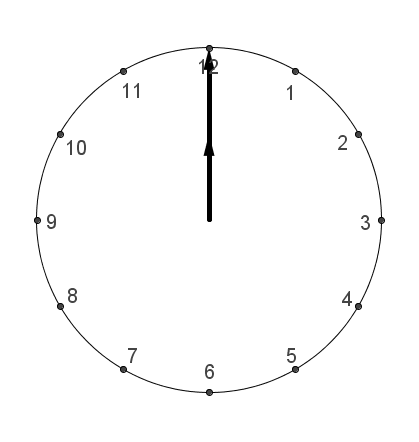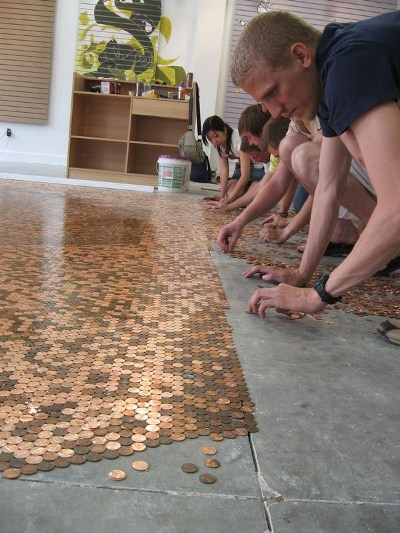Dan Meyer has morphed his “What can you do with this” edu-meme into “#101qs”: what questions pop into your head upon observing a picture, movie, or other demonstration. The more likely it is that a student will ask that question, the better.
I will present one now. For your consideration,
“13 Folds”

If you tossed that up in your class, what would the kids say? What’s the first question that pops into your head?
I’ll offer my own thoughts, and I welcome you to share yours in the comments.
I think this image has a lot of things going for it. It is clearly the ACT1 image. Toss it up. Don’t say anything. What will the kids ask?
What is it?
Toilet Paper.
That’s hella toilet paper! (excuse the norcal slang 😉 )
yeah! it’s a lot!
How much?
I dunno.
What do you mean you don’t know!? you’re the teacher!
Can we figure it out?
At this point, you can go to ACT2: Have the students figure out what they need. In this case, there’s a rather nice ACT2 image:
Act 2

Alternatively, you could say 5 feet by 2.5 feet on the image. Or if you’re really brave, you could estimate it by the heights of the kids in the screenshot. Ideally, you don’t have to say much else. To a stuck student I might offer only: “unfold it“.
Extensions:
- Graph it.
- How many rolls did they buy? What did it cost them?
- How thick is the paper? Graph THAT.
- How many layers are at the 13th fold? Another graph to make!
- Why toilet paper?
- What is preventing the 14th fold? Why did they stop?
And finally,
Act 3

Ah, but there’s a bonus: we have the actual video of them doing the folds. What a great way to end the class!
Why toilet paper? Try the Mythbusters episode: http://www.youtube.com/watch?v=kRAEBbotuIE
And then for those super interested kids who can access the final extension questions, you can lead them through Brittany Gallivan’s solution for arbitrary paper: http://en.wikipedia.org/wiki/Britney_Gallivan
Credit to Dr. James Tanton http://www.jamestanton.com/ for leading the actual exercise at MIT.
Toss me some comments!


